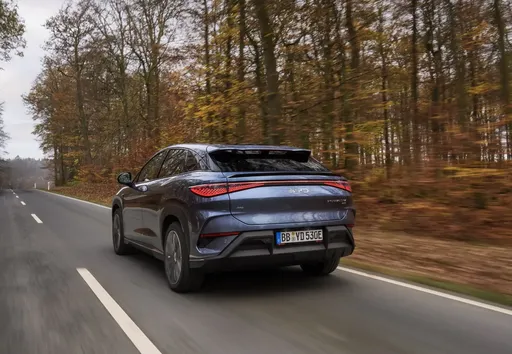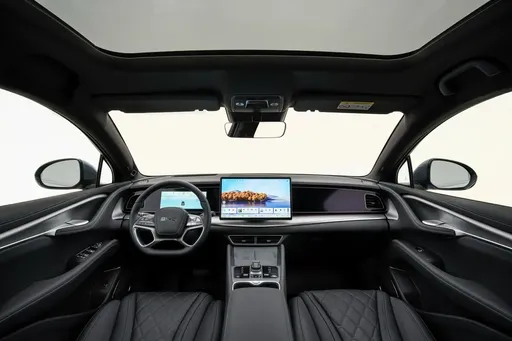Alfa Romeo Junior vs BYD Sealion 7 – Which one offers the better deal?
Both models have their strengths – but which one suits you more?
Compare performance, efficiency, price and space directly: Alfa Romeo Junior or BYD Sealion 7?
Costs and Efficiency:
Looking at overall running costs, both models reveal some interesting differences in everyday economy.
Alfa Romeo Junior has a decisively advantage in terms of price – it starts at 25700 £, while the BYD Sealion 7 costs 42800 £. That’s a price difference of around 17177 £.
In terms of energy consumption, the advantage goes to the Alfa Romeo Junior: with 15.10 kWh per 100 km, it’s clearly perceptible more efficient than the BYD Sealion 7 with 19.90 kWh. That’s a difference of about 4.80 kWh.
As for range, the BYD Sealion 7 performs a bit better – achieving up to 502 km, about 92 km more than the Alfa Romeo Junior.
Engine and Performance:
Power, torque and acceleration say a lot about how a car feels on the road. This is where you see which model delivers more driving dynamics.
When it comes to engine power, the BYD Sealion 7 has a convincingly edge – offering 530 HP compared to 280 HP. That’s roughly 250 HP more horsepower.
In acceleration from 0 to 100 km/h, the BYD Sealion 7 is evident quicker – completing the sprint in 4.50 s, while the Alfa Romeo Junior takes 5.90 s. That’s about 1.40 s faster.
In terms of top speed, the BYD Sealion 7 performs slight better – reaching 215 km/h, while the Alfa Romeo Junior tops out at 206 km/h. The difference is around 9 km/h.
There’s also a difference in torque: BYD Sealion 7 pulls significantly stronger with 690 Nm compared to 345 Nm. That’s about 345 Nm difference.
Space and Everyday Use:
Cabin size, boot volume and payload all play a role in everyday practicality. Here, comfort and flexibility make the difference.
Both vehicles offer seating for 5 people.
In curb weight, Alfa Romeo Junior is decisively lighter – 1380 kg compared to 2225 kg. The difference is around 845 kg.
In terms of boot space, the BYD Sealion 7 offers clearly perceptible more room – 520 L compared to 415 L. That’s a difference of about 105 L.
In maximum load capacity, the BYD Sealion 7 performs distinct better – up to 1789 L, which is about 509 L more than the Alfa Romeo Junior.
When it comes to payload, Alfa Romeo Junior hardly perceptible takes the win – 420 kg compared to 410 kg. That’s a difference of about 10 kg.
Who wins the race?
The BYD Sealion 7 proves to be wins the duel decisively and therefore becomes our DriveDuel Champion!
BYD Sealion 7 is the better all-rounder in this comparison.
 @ BYD Auto / BYD Global Media
@ BYD Auto / BYD Global Media
BYD Sealion 7
Alfa Romeo Junior
The Alfa Romeo Junior captures the essence of Italian design with its sleek lines and compact dimensions, making it an icon of elegance and performance. With a spirited driving experience and a charming retro aesthetic, it appeals to enthusiasts and casual drivers alike. This delightful car embodies the brand's rich heritage while remaining a fun and engaging option for those seeking a unique automotive experience.
details @ Alfa Romeo / Stellantis Media
@ Alfa Romeo / Stellantis Media
 @ Alfa Romeo / Stellantis Media
@ Alfa Romeo / Stellantis Media
 @ Alfa Romeo / Stellantis Media
@ Alfa Romeo / Stellantis Media
BYD Sealion 7
The Sealion 7 captivates with its striking design and impressive performance that appeals to both enthusiasts and casual drivers alike. With a focus on comfort and advanced technology, this model redefines the driving experience, making every journey enjoyable. Its sleek silhouette coupled with an innovative interior showcases the perfect blend of style and functionality.
details @ BYD Auto / BYD Global Media
@ BYD Auto / BYD Global Media
 @ BYD Auto / BYD Global Media
@ BYD Auto / BYD Global Media
 @ BYD Auto / BYD Global Media
@ BYD Auto / BYD Global Media
 @ Alfa Romeo / Stellantis Media
@ Alfa Romeo / Stellantis Media
|
 @ BYD Auto / BYD Global Media
@ BYD Auto / BYD Global Media
|
|
|
|
Costs and Consumption |
|
|---|---|
|
Price
25700 - 41600 £
|
Price
42800 - 52300 £
|
|
Consumption L/100km
4.8 - 5.4 L
|
Consumption L/100km
-
|
|
Consumption kWh/100km
15.1 - 17.5 kWh
|
Consumption kWh/100km
19.9 - 21.9 kWh
|
|
Electric Range
344 - 410 km
|
Electric Range
456 - 502 km
|
|
Battery Capacity
0.4 - 51 kWh
|
Battery Capacity
-
|
|
co2
0 - 119 g/km
|
co2
0 g/km
|
|
Fuel tank capacity
44 - 45 L
|
Fuel tank capacity
-
|
Dimensions and Body |
|
|---|---|
|
Body Type
SUV
|
Body Type
SUV
|
|
Seats
5
|
Seats
5
|
|
Doors
5
|
Doors
4
|
|
Curb weight
1380 - 1689 kg
|
Curb weight
2225 - 2435 kg
|
|
Trunk capacity
340 - 415 L
|
Trunk capacity
520 L
|
|
Length
4173 mm
|
Length
4830 mm
|
|
Width
1781 mm
|
Width
1925 mm
|
|
Height
1505 - 1538 mm
|
Height
1620 mm
|
|
Max trunk capacity
1205 - 1280 L
|
Max trunk capacity
1789 L
|
|
Payload
390 - 420 kg
|
Payload
410 kg
|
Engine and Performance |
|
|---|---|
|
Engine Type
Electric, Petrol MHEV
|
Engine Type
Electric
|
|
Transmission
Automatic
|
Transmission
Automatic
|
|
Transmission Detail
Dual-Clutch Automatic, Reduction Gearbox
|
Transmission Detail
Reduction Gearbox
|
|
Drive Type
Front-Wheel Drive, All-Wheel Drive
|
Drive Type
Rear-Wheel Drive, All-Wheel Drive
|
|
Power HP
136 - 280 HP
|
Power HP
313 - 530 HP
|
|
Acceleration 0-100km/h
5.9 - 9.1 s
|
Acceleration 0-100km/h
4.5 - 6.7 s
|
|
Max Speed
150 - 206 km/h
|
Max Speed
215 km/h
|
|
Torque
230 - 345 Nm
|
Torque
380 - 690 Nm
|
|
Number of Cylinders
3
|
Number of Cylinders
-
|
|
Power kW
100 - 207 kW
|
Power kW
230 - 390 kW
|
|
Engine capacity
1199 cm3
|
Engine capacity
-
|
General |
|
|---|---|
|
Model Year
2024 - 2025
|
Model Year
2024
|
|
CO2 Efficiency Class
A, C, D
|
CO2 Efficiency Class
A
|
|
Brand
Alfa Romeo
|
Brand
BYD
|
What drive types are available for the Alfa Romeo Junior?
Available configurations include Front-Wheel Drive or All-Wheel Drive.
The prices and data displayed are estimates based on German list prices and may vary by country. This information is not legally binding.
